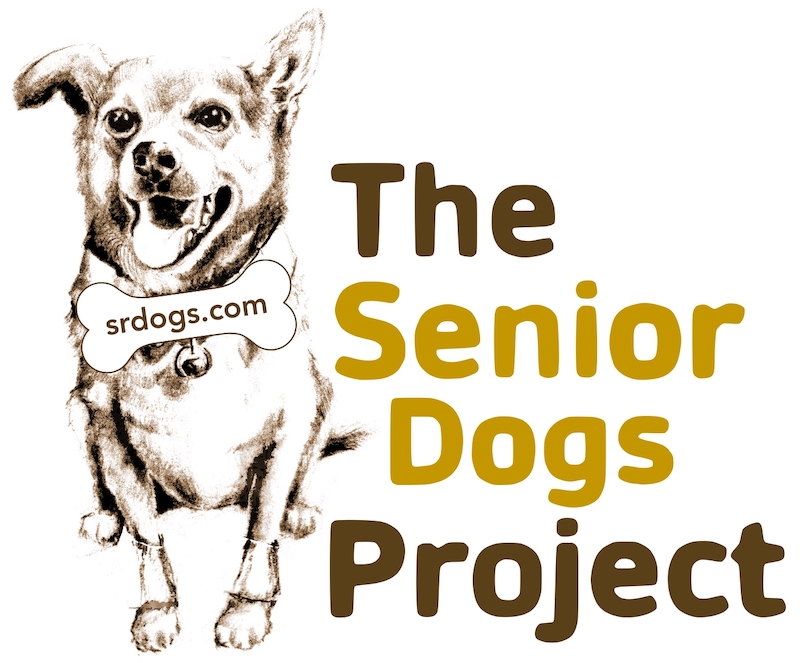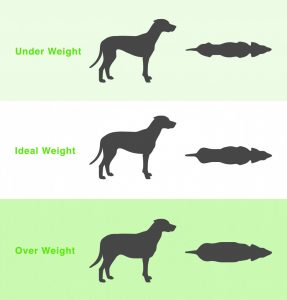Keep your dog at a healthy weight. Obesity will create health problems and shorten his life. In fact, according to a Tufts University report, not only do overweight dogs have shorter lifespans than dogs of normal weight, but they are afflicted more often with back and joint problems (arthritis), heart and lung problems, and an overall decrease in quality of life. According to the report, “There are problems stemming from obesity that involve almost every system in the body. Even without signs you can see, obese dogs have higher anesthesia risks and medical costs.”
What is a healthy weight for your dog? Here's a graphic that is easy to use:
If your dog doesn't look like the "ideal weight" in the graphic above, your first step should be to review the situation with your veterinarian. If your dog is seriously overweight, a weight-loss program needs to be designed in partnership with your veterinarian. If your dog needs to lose just a pound or two, the program may be as simple as reducing portion size.
Watch for the tendency to give your dog table scraps (especially fatty ones) or too many treats.
Nutrition and exercise are intricately related when it comes to weight control. Try to keep your older dog moving as much as she is able. This will help her to burn calories and to maintain more muscle; muscle tissue burns more calories than fat. (More on exercise later in these notes…..) If you notice a gain in weight, feed her less of any of the foods she likes, provided her hunger is abated. The senior “light” formulas of manufactured food tend to contain ingredients that will make your dog feel full, even with fewer calories, but that sense of “fullness” is often achieved with ingredients that aren’t nutritionally beneficial. Although pet food manufacturers advertise these special “light” diets or protein-reduced foods for older dogs, there is actually no proven benefit from these special diets, and, in some cases, there may be harm.
Any senior who comes to live at the Senior Dogs Project, either in foster care or as an adoption, always gets two and sometimes three proportioned meals a day rather than just one large meal. Why? First — such a routine is more interesting and motivational; it gets the dog up and moving and anticipating. Also, it’s less stressful for the dog to be less ravenous at mealtime. AND calories get burned more efficiently if they are spaced through the day. (But we always keep in mind that the dog’s elimination schedule will change correspondingly.)
If a dog has been accustomed to eating one large meal a day, introduce the several-meals-per-day plan gradually. Keep in mind that these several meals should add up to the same amount as was contained in one meal. The difference will be in the way the calories are used.
Keep your dog entertained with activities other than eating, and make her more dependent on verbal praise and physical contact than on “treats” for her daily rewards.
More information on developing a weight-loss plan for your dog......
More helpful information at the Pet Obesity Prevention Website
And this great article from the Whole Dog Journal.....

